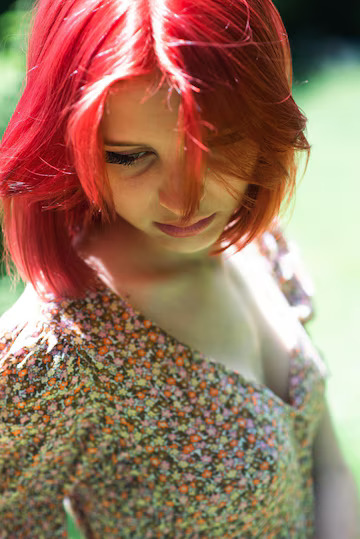Introduction: The Mystery of Rare Hair Colors
Have you ever looked at someone with striking red hair and piercing blue eyes and thought, “Wow, that’s rare!”? You’re not alone. Hair color is one of the most visually defining human traits, and certain shades are far less common than others. But what is the rarest hair color in the world, and why does it occur so infrequently?
In this article, we’ll unravel the genetic secrets behind hair color, explore the rarest shades, and even touch on the elusive combination of red hair and blue eyes—often considered the rarest of all. Get ready for an engaging, scientifically accurate, and easy-to-read journey into the world of genetics!
The Science Behind Hair Color: Why We Have Different Shades
Hair color is determined primarily by melanin, the pigment responsible for coloring our hair, skin, and eyes. Two types of melanin contribute to hair color:
- Eumelanin: Produces black or brown shades.
- Pheomelanin: Produces red and yellow hues.
The MC1R gene (Melanocortin 1 Receptor) plays a crucial role in regulating melanin production. When the gene is active, eumelanin dominates, resulting in brown or black hair. When the gene is less active, it allows more pheomelanin, creating blonde, strawberry blonde, or red hair.
The Rarest Hair Color in the World: Red Hair
Among all natural hair colors, red is the rarest, occurring in only 1-2% of the global population. This hair color results from specific variations in the MC1R gene that reduce eumelanin production, allowing pheomelanin to shine through. The highest concentration of redheads is found in Scotland (13%) and Ireland (10%).
Why Is Red Hair So Rare?
Red hair is a recessive trait, meaning a person must inherit two copies of the MC1R gene variation (one from each parent) to have red hair. This rarity makes it much less common than other hair colors, which can be influenced by multiple dominant genes.
Personal Anecdote: My First Encounter with a Natural Redhead
I remember the first time I met a natural redhead. I was in college, sitting in a genetics class, when my professor introduced a fellow student as one of the rarest individuals in the room—because she had red hair and blue eyes. Until then, I had no idea how uncommon that combination was!
Other Rare Hair Colors: Beyond Red
While red hair holds the title for the rarest natural hair color, a few other shades are also considered rare.
1. Blonde Hair (2-3% of the world’s population)
Natural blonde hair is more common than red but still relatively rare. It’s primarily found in Northern Europe and results from low levels of both eumelanin and pheomelanin.
2. White or Platinum Blonde Hair (Less than 0.5%)
Ultra-light blonde or platinum hair is even rarer and often associated with genetic conditions like albinism.
3. Black Hair with Blue Undertones
Black hair is the most common worldwide, but in some rare cases, it has a blue or violet sheen due to high eumelanin concentration.
The Rarest Hair and Eye Color Combination: Red Hair & Blue Eyes
Red hair is rare. Blue eyes are rare. Put them together, and you have the rarest combination of all! Only 0.17% of the global population has this unique mix.
Why Is This Combination So Rare?
- Red hair requires two copies of the recessive MC1R gene variant.
- Blue eyes require two copies of a recessive OCA2 gene variant.
- Since both are recessive traits, the odds of inheriting both are extremely low.
Personal Anecdote: My Friend with the Unicorn Genes
One of my childhood friends had red hair and the most striking blue eyes I’d ever seen. People would stop her on the street, complimenting her unique look. She once joked, “I feel like a unicorn because everyone keeps staring at me!”
The Future of Hair Colors: Will Rare Hair Colors Disappear?
With globalization and genetic mixing, some scientists predict that certain rare traits, like red hair and blue eyes, may become even less common. However, genetics is unpredictable, and unique mutations could emerge to keep the diversity alive.
Fun Facts About Hair Color
- Redheads have a higher pain tolerance due to differences in how their bodies process pain-related hormones.
- Blondes have more hair strands (on average 150,000) compared to brunettes and redheads (90,000-110,000).
- Melanin affects aging—people with darker hair tend to show gray hair later than blondes or redheads.
Conclusion: Celebrating Genetic Diversity
Hair color is one of the most fascinating aspects of human genetics. While red hair remains the rarest, every shade tells a story about our ancestors and unique genetic backgrounds. If you have a rare hair color, embrace it—it’s a testament to the incredible complexity of human DNA!
So, next time you see a redhead with blue eyes, remember—you’ve just encountered one of the rarest genetic combinations on Earth!
What’s your hair color? Have you ever met someone with an incredibly rare hair-eye combination? Share your thoughts in the comments!




